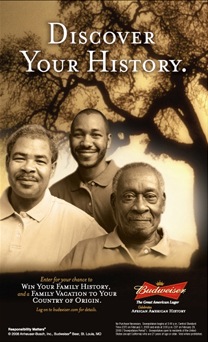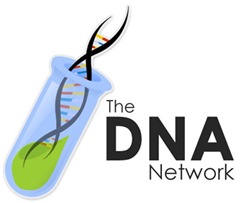 In honor of Black History Month, Anheuser-Busch – through the flagship Budweiser brand – announces a sweepstakes called “Discover Your History” in which a grand-prize winner and three guests will be given a trip to “their ancestral background as determined via genetic testing.” Nine other winners will receive “genetic genealogy testing and ancestral family tree research.”
In honor of Black History Month, Anheuser-Busch – through the flagship Budweiser brand – announces a sweepstakes called “Discover Your History” in which a grand-prize winner and three guests will be given a trip to “their ancestral background as determined via genetic testing.” Nine other winners will receive “genetic genealogy testing and ancestral family tree research.”
The testing will be performed by AfricanDNA.com L.L.C., the company founded by Harvard University Professor Henry Louis Gates Jr. in conjunction with Family Tree DNA.
From Anheuser-Busch’s press release:
“One of the most basic human desires is to understand who we are and how our family is woven into the broader, historic context of humanity,†said Johnny Furr Jr., vice president, Community Affairs and Supplier Diversity for Anheuser-Busch, Inc. “We at Budweiser are proud to offer a lucky family the chance to embark on this remarkable journey of discovery. We hope to inspire others to use today’s technology to learn about their ancestors and region of origin.â€
 GenomeWeb Daily News
GenomeWeb Daily News 
 January 2008 has been another interesting and busy month for genetic genealogy and personal genomics. Keeping track of the latest developments can be a challenge, so I thought I’d do a brief round-up of some of the headlines that I thought were particularly interesting. Happy reading!
January 2008 has been another interesting and busy month for genetic genealogy and personal genomics. Keeping track of the latest developments can be a challenge, so I thought I’d do a brief round-up of some of the headlines that I thought were particularly interesting. Happy reading! As I
As I 

